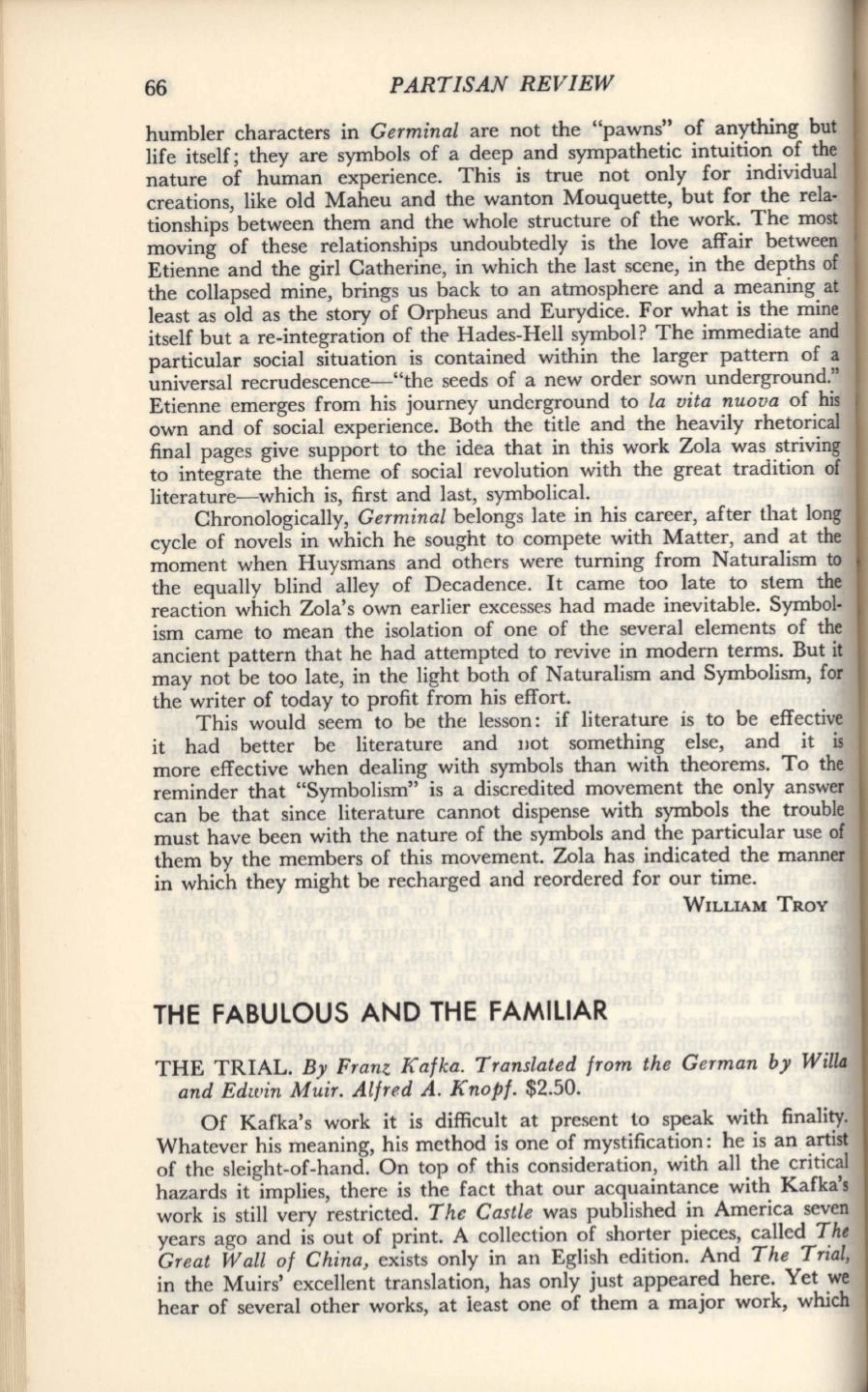
66
PARTISAN REVIEW
humbler characters in
Germinal
are not the "pawns" of anything but
life itself; they are symbols of a deep and sympathetic intuition of the
nature of human experience. This is true not only for individual
creations, like old Maheu and the wanton Mouquette, but for the rela-
tionships between them and the whole structure of the work. The most
moving of these relationships undoubtedly is the love affair between
Etienne and the girl Catherine, in which the last scene, in the depths of
the collapsed mine, brings us back to an atmosphere and a meaning at
least as old as the story of Orpheus and Eurydice. For what is the mine
itself but a re-integration of tht>Hades-Hell symbol? The immediate and
particular social situation is contained within the larger pattern of a
universal recrudescence-"the seeds of a new order sown underground."
Etienne emerges from his journey underground to
la vita nuova
of his
own and of social experience. Both the title and the heavily rhetorical
final pages give support to the idea that in this work Zola was striving
to integrate the theme of social revolution with the great tradition of
literature-which is, first and last, symbolical.
Chronologically,
Germinal
belongs late in his career, after that long
cycle of novels in which he sought to compete with Matter, and at the
moment when Huysmans and others were turning from Naturalism to
the equally blind alley of Decadence. It came too late to stem the
reaction which Zola's own earlier excesses had made inevitable. Symbol-
ism came to mean the isolation of one of the several elements of the
ancient pattern that he had attempted to revive in modern terms. But it
may not be too late, in the light both of Naturalism and Symbolism, for
the writer of today to profit from his effort.
This would seem to be the lesson: if literature is to be effective
it had better be literature and !lot something else, and it is
more effective when dealing with symbols than with theorems. To the
reminder that "Symbolism" is a discredited movement the only answer
can be that since literature cannot dispense with symbols the trouble
must have been with the nature of the symbols and the particular use of
them by the members of this movement. Zola has indicated the manner
in which they might be recharged and reordered for our time.
WILLIAM TROY
THE FABULOUS AND THE FAMILIAR
THE TRIAL.
By Fran;:, Kafka. Translated from the German by Willa
and Edwin Muir. Alfre.d A. Knopf. $2.50.
Of Kafka's work it is difficult at present to speak with finality.
Whatever his meaning, his method is one of mystification: he is an artist
of the sleight-of-hand. On top of this consideration, with all the critical
hazards it implies, there is the fact that our acquaintance with Kafka's
work is still very restricted.
The Castle
was published in America seven
years ago and is out of print. A collection of shorter pieces, called
The
Great Wall of China,
exists only in an Eglish edition. And
The Trial,
in the Muirs' excellent translation, has only just appeared here. Yet we
hear of several other works, at least one of them a major work, which


